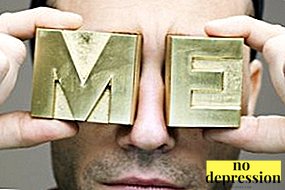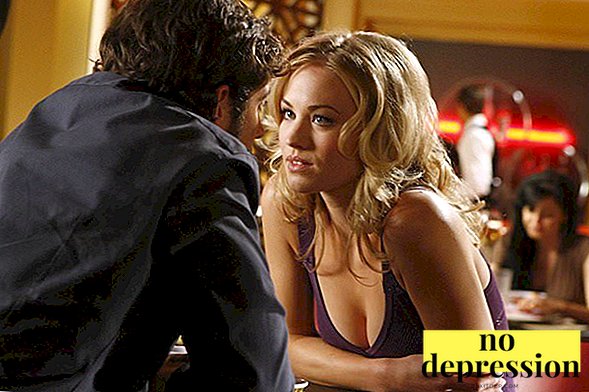In a broad sense, panic attack is a disorder, accompanied by recurrent anxiety attacks.
Provocative factors may be limited to a specific situation or progression of mental disorders.
Attacks in most cases occur suddenly. Causes of panic attacks may remain unexplained for a long time. To determine them, it is necessary to conduct a comprehensive examination, consultation with a neurologist, a psychologist and a psychotherapist.
General information
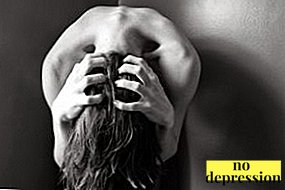
Panic attack is a sudden anxiety and fearcombined with vegetative traits.
Attacks of this condition can occur singularly under the influence of certain factors or become regular.
Frequent panic attacks without clearly expressed reasons, they are a symptom of a mental disorder or diseases of some body systems (for example, heart disease, endocrine disabilities, etc.).
Special features panic attacks:
- panic attack is a type of anxiety disorder of the neurotic level;
- the beginning and end of an attack is sudden;
- for ICD-10 panic attacks, code F41.0 “Panic frustration” was assigned (the full path of such states includes codes F40-48, F41, F41.0).
Panicking - what does this mean?
Panic is manifested in feeling very anxious. Anxiety can be due to certain factors or appear for no reason. During an attack, there is an active production of adrenaline.
The sharp narrowing of the blood vessels, provoked by this substance, causes an increase in blood pressure, respiratory problems and heartbeat.
The consequence of such a reaction may be a feeling of fear of the arising state. The result is powerful anxiety attack.
Types of panic

In medical practice, panic attacks are divided into two categories - deployed and small (abortive).
In the first case, the patient has four or more panic symptomsin the second - less than four.
Small attacks may occur for a short time or several times a day. The time intervals between the deployed panic attacks are longer.
Regular panic attacks may be caused by the progression of mental disorders or phobic conditions.
Types of panic attacks:
- situational (the provoking factor is the particular psycho-traumatic situation);
- spontaneous (the cause of the attack can not be identified);
- conditionally situational (an attack occurs on the background of a biological or chemical stimulus).
Why arise?
In medical practice, the causes of panic attacks are divided into three categories - physiological, psychological and biological.
In most cases, the trigger factor is a combination of deviations from several groups. Regular panic attacks occur under the influence of strong emotional shocks or serious deviations of the nervous system.
Provoke a panic attack The following factors may:
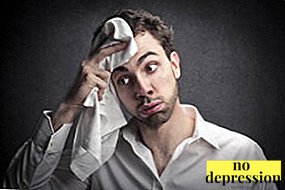 consequences of traumatic situations (the death of a loved one, an experienced accident, etc.);
consequences of traumatic situations (the death of a loved one, an experienced accident, etc.);- excessive sensitivity of the psyche;
- the result of hormonal disruptions and alterations in the body;
- intoxication of the body with alcoholic and narcotic substances;
- the progression of somatic diseases;
- uncontrolled intake of potent or psychotropic drugs;
- genetic predisposition;
- elevated blood catecholamines;
- tendency to depression;
- excessive physical or mental overstrain of the body;
- the presence of phobic states and their progression.
Panic attacks. What it is and how to treat them:
How do they appear?
In some cases, the manifestation of panic attacks different specific.
In the presence of certain provoking factors, regular attacks of anxiety will be the first signals indicating the development of serious deviations of the psycho-emotional state.
Symptoms of panic attacks in each case will be different. Features of different types of panic attacks, depending on the provoking factor:
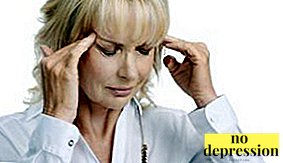 Before menstruation The most common manifestations of a panic attack are abrupt mood changes in women, which may be accompanied by attacks of aggression or extreme fear (headaches, abnormalities in the digestive system, painful sensations of various localization and intensity, a tendency to depressive states join the psychoemotional state).
Before menstruation The most common manifestations of a panic attack are abrupt mood changes in women, which may be accompanied by attacks of aggression or extreme fear (headaches, abnormalities in the digestive system, painful sensations of various localization and intensity, a tendency to depressive states join the psychoemotional state).- With menopause in women, panic attacks can be complemented by obsessive states and phobias (the psychological and vegetative symptoms are joined by the fear of old age, loss of femininity and attractiveness, depression, the object of which is the realization of mistakes made or the lack of self-realization, all of these factors cause a strong feeling of anxiety and fear).
- After alcohol Panic attacks can manifest not only anxiety, but also phobic states (for example, fear of persecution, death, auditory and visual hallucinations, as well as suicidal syndrome).
- With a hangover panic attack combines vegetative disturbances and unjustified fear (headaches, tremor of the limbs, tachycardia can be complemented by anxiety, guilt feelings, attacks of sudden fear).
- Panic attacks in adults, arising at night in a dream, in medical practice, they are denoted by the term “sleep paralysis” (sleep is suddenly interrupted, a person feels torpor, a tremor of the extremities, an impaired breathing and heartbeat, anxiety, there is a fear of darkness, death or unhappiness).
- When quit smoking (if there is such a factor, panic attacks can occur suddenly, symptoms of an attack manifest themselves during the day or night, the intensity depends on the sensitivity of the psyche, can be accompanied by a feeling of sudden anxiety, obsessive thoughts about death or death, extremity tremor, increased sweating, signs of tachycardia and other characteristic features).
Nocturnal panic attacks. What to do with them? Find out from the video:
Psychology of Panic

The psychology of panic attacks may vary between different categories of patients.
Attacks in different cases have certain prerequisites.
For example, men and women in varying degrees are prone to panic attacks, and children and adolescents are at particular risk.
Common factors that can trigger sudden anxiety attacks are genetic predisposition and the regular impact of negative factors on the psycho-emotional state.
What are neuroses from? Differences in the psychology of attacks in different categories of patients:
- In men In most cases, panic attacks are provoked by excessive physical and mental overstrain, somatic diseases and lifestyle (male representatives are more susceptible to abuse of bad habits, they are characterized by excessive excitability of the psyche).
- Among women The main trigger factors for panic attacks are hormonal changes in the body and the initial mental sensitivity (a woman is more prone to feelings, panic attacks can be triggered by hormonal changes during menstruation, menopause or pregnancy).
- In children The main cause of panic attacks is the impact of external factors (immoral behavior of parents, excessive punishment, constant humiliation, as well as other stressful situations, the risk of panic attacks is the risk of developing phobias in adulthood).
- Teenagers Unreasonable panic attacks are most often the result of hormonal changes in the body (during the “transitional age,” the adolescent's psyche is overly sensitive, even minor effects of negative factors can provoke panic attacks).
Symptoms and signs

Intensity panic attack and the occurrence of certain symptoms depends on the provoking factor and the general state of the human psyche.
In most cases, the attacks are accompanied by the emotional-affective component, but the anxious-phobic component may be absent.
If panic occurs due to the progression of phobias, then psycho-emotional abnormalities will be more pronounced. Autonomic disorders are considered an inherent symptom of panic attacks.
A panic attack is accompanied by the following symptomatic:
- difficulty breathing ("lump in the throat", suffocation, etc.);
- feeling of anxiety and fear;
- failures in the heart (pain, rapid pulse);
- fever;
- general weakness of the body;
- feeling chill or fever;
- excessive sweating;
- convulsive states;
- lack of coordination of movements;
- bouts of vomiting and nausea;
- headaches or dizziness;
- violation of the perception of sounds;
- speech change;
- tremor of the limbs.
Symptoms panic attack:
How long does it take?

Panic attack on average lasts for fifteen minutes.
In some cases, its duration can reach one hour. During this period of time, one prolonged attack or several short-term attacks may occur.
The beginning of a panic is different unpredictability. The peak of the attack in most cases occurs in the fifth minute. After suffering a panic, a person feels a general weakness of the body.
What is dangerous?
Panic attack can be dangerous not only for the person who is experiencing it, but also for the people around them. The combination of anxiety and autonomic disorders may be mistaken for a heart attack, tachycardia, or a symptom of other diseases.
A person begins to drink medicines, trying to get rid of the disease.
Incorrectly chosen medications cause significant harm to health. In addition, panic can provoke aggression, the development of phobias and suicidal tendencies.
Additional consequences A panic attack can become the following states:
- exacerbation of chronic diseases;
- risk of development of mental disorders;
- the likelihood of harm to the health of others.
What methods include treatment?

In the preparation of a course of treatment of panic attacks should be involved psychologist, psychotherapist and neurologist.
Specialists diagnose the patient's health, identify the causes of anxiety and select the most effective means of treating existing pathologies.
In most cases, panic attacks are eliminated by combining drug therapy and the use of special psychotherapeutic techniques impact.
Therapy for panic attacks may include the following techniques:
- Cognitive-behavioral therapy (the purpose of the procedures is to change the thinking of the patient and find the most effective ways to solve the problem).
- Psychoanalysis methods (a long procedure for influencing a person’s subconscious, may include individual lessons with a psychologist, family psychotherapy courses, etc.).
- Hypnosis (in psychological and psychiatric practice, this technique is considered one of the most effective, the impact is carried out directly on the human subconscious).
- Neuro-linguistic programming (a panic attack can be fixed as a conditioned reflex, the task of the method is to eliminate such a reaction with the help of special techniques).
- Physiotherapy (relaxation method through tension, breathing exercises, massage).
- Meditation and muscle relaxation (mastering these techniques helps not only reduce the risk of recurrence of panic attacks, but also helps to cope with the attacks at the time of their manifestation).
- Tinhibitor therapy serotonin reuptake (Tsipramil, Sertralin, Fluoxetine).
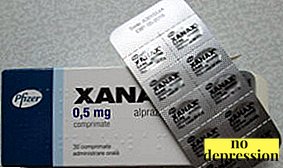 Taking drugs from the category benzodiazepines (Alprazolam, Clonazepam, Lorazepam).
Taking drugs from the category benzodiazepines (Alprazolam, Clonazepam, Lorazepam).- Using tranquilizers (Xanax, Rivotril, Atarax).
- Course Acceptance Tricyclic antidepressants (Maprotiline, Imipramine, Amitriptyline).
Regular panic attacks imply complex therapy, which includes several types of techniques. Under no circumstances can one ignore panic attacks, especially unfounded ones. First of all, you need to consult with a neurologist and a psychotherapist.
If panic attacks do not stop in time, the complications can trigger irreversible pathological processes associated with the psyche.
How to get rid from panic attacks? TOP 10 tips:

 consequences of traumatic situations (the death of a loved one, an experienced accident, etc.);
consequences of traumatic situations (the death of a loved one, an experienced accident, etc.); Before menstruation The most common manifestations of a panic attack are abrupt mood changes in women, which may be accompanied by attacks of aggression or extreme fear (headaches, abnormalities in the digestive system, painful sensations of various localization and intensity, a tendency to depressive states join the psychoemotional state).
Before menstruation The most common manifestations of a panic attack are abrupt mood changes in women, which may be accompanied by attacks of aggression or extreme fear (headaches, abnormalities in the digestive system, painful sensations of various localization and intensity, a tendency to depressive states join the psychoemotional state). Taking drugs from the category benzodiazepines (Alprazolam, Clonazepam, Lorazepam).
Taking drugs from the category benzodiazepines (Alprazolam, Clonazepam, Lorazepam).